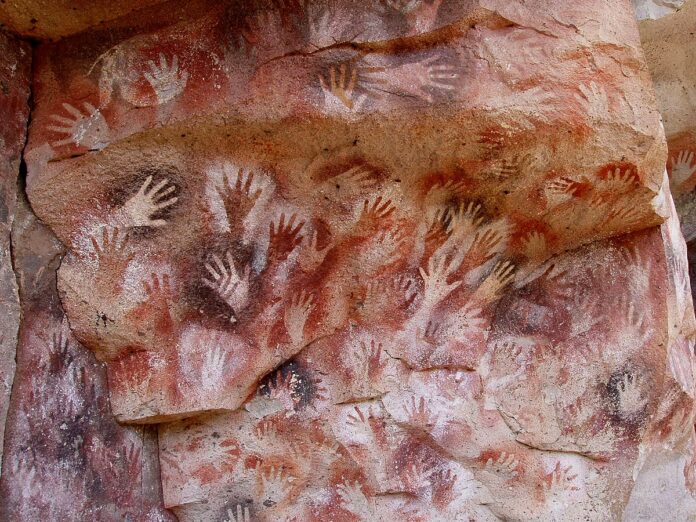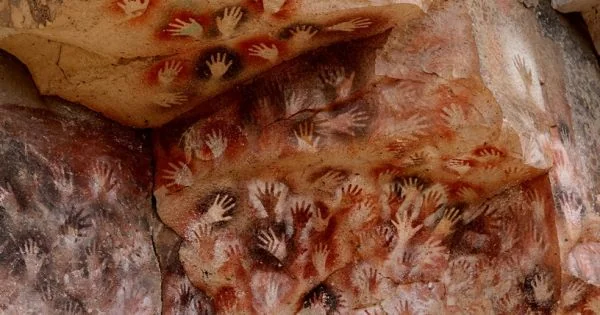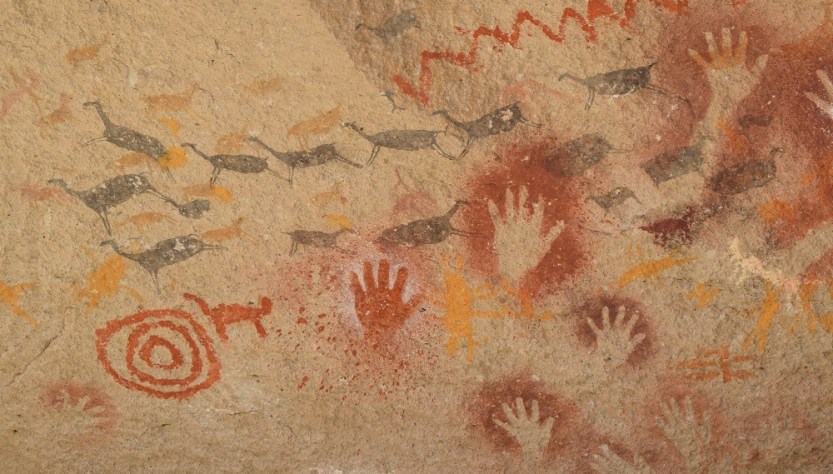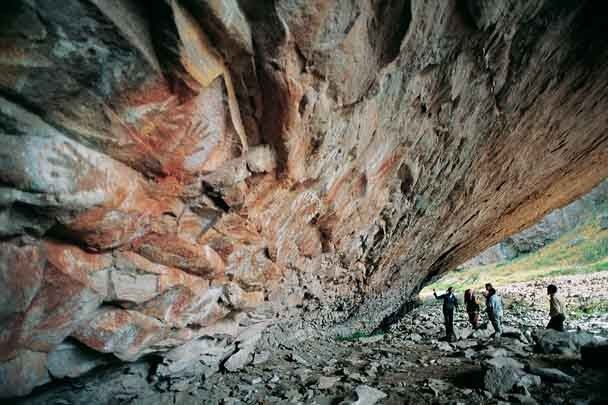Nestled deep within the rugged hills of Argentina’s Santa Cruz region lies an extraordinary archaeological treasure, undisturbed by time. The Cueva de las Manos, or “Cave of the Hands,” has fascinated scholars and visitors alike, offering a fascinating glimpse into the lives of the area’s earliest inhabitants. This impressive collection of cave art, dating from 13,000 to 9,500 years ago, showcases the creativity and artistic skill of the region’s first peoples.

The Cueva de las Manos: A Glimpse into History
Situated within the breathtaking landscapes of Argentina’s Santa Cruz province, the Cueva de las Manos features rock shelters and caves decorated with an exceptional array of prehistoric paintings. The site is named for the iconic stenciled outlines of human hands on the cave walls, created by the region’s earliest inhabitants to leave their mark. However, the Cueva de las Manos is much more than just hand stencils. The cave walls and shelters are adorned with a diverse collection of paintings, depicting various animals, hunting scenes, and other figures that provide a captivating insight into the lives and culture of the region’s first peoples.

Among the most notable depictions are those of the guanacos, a camelid species still found in the region today. These elegant creatures are portrayed in various poses, from solitary figures to dynamic hunting scenes where they are pursued by human figures. The detailed and realistic rendering of these animals highlights the skill and keen observation of the cave’s ancient artists. Alongside the animal depictions, the cave paintings also feature numerous hunting scenes, showing human figures engaged in the pursuit and capture of their prey. These scenes offer a unique glimpse into the hunting practices and techniques of the region’s earliest inhabitants, providing valuable insights into their daily lives and survival strategies.
The Artistic Evolution and Cultural Importance
The artistic sequence of the Cueva de las Manos is complex and multi-layered, comprising three main stylistic groups spanning over 9,000 years. The earliest paintings, dating back to the 10th millennium BP (Before Present), include the iconic hand stencils and more abstract, geometric motifs. Over time, the paintings evolved to become increasingly naturalistic, incorporating animal figures and hunting scenes.

The significance of the Cueva de las Manos extends beyond its artistic value. The international scientific community regards the site as one of the most important archaeological locations in South America, offering a rare and well-preserved insight into the lives of the region’s earliest hunter-gatherer communities.
For over 25 years, the rock art, natural environment, and archaeological sites in the surrounding area have been the focus of extensive research. The site’s exceptional preservation, combined with its unique geological features, has made it a prime destination for scholars and researchers seeking to uncover the mysteries of Patagonia’s past. The Cueva de las Manos stands as a testament to the enduring creative spirit of humanity. These ancient cave paintings, crafted with meticulous care and attention to detail, continue to captivate and inspire people worldwide. They offer a window into a distant past when the region’s first inhabitants left their lasting mark on the world, ensuring their legacy endures long after they have gone.

A Tribute to Human Resilience and Creativity
As we look upon the sweeping landscapes and extraordinary cave art of the Cueva de las Manos, we are reminded of the incredible resilience and ingenuity of the human spirit. These ancient artworks, spanning millennia, continue to capture the imagination and inspire us to connect with the rich tapestry of our shared past. They remind us that the pursuit of knowledge and the celebration of our cultural heritage are vital to understanding the world and our place within it.



